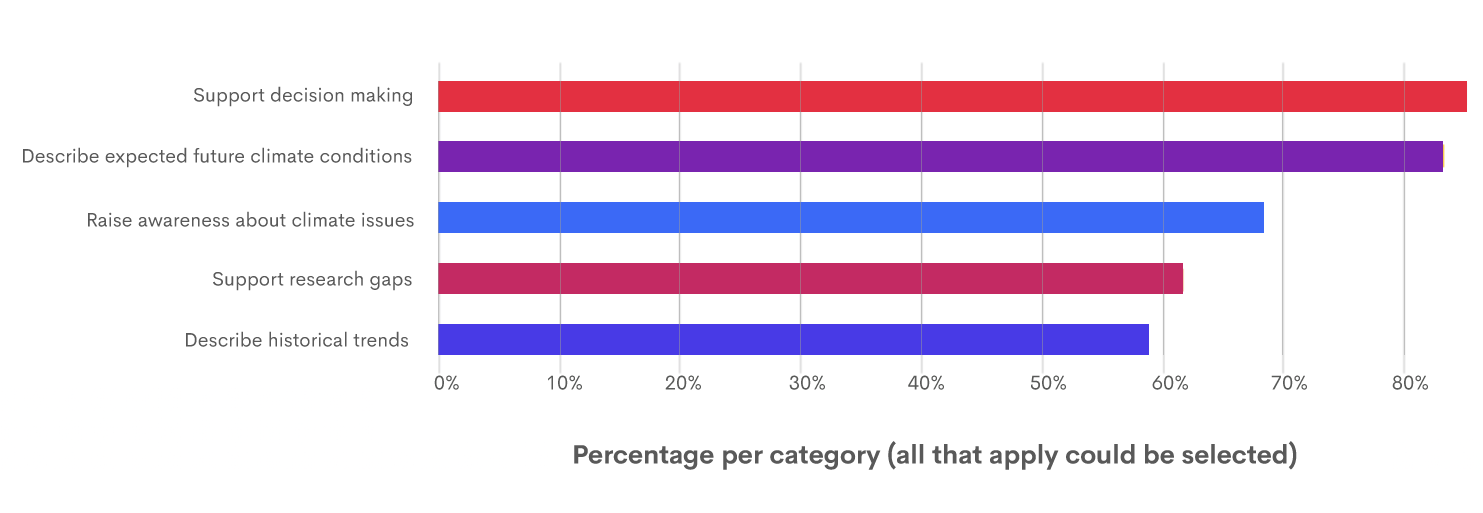Establishment of a Focus Group
The surveys also determined user interest for participating in short follow-up interviews and in working groups to define and develop case studies for the health module and/or to provide feedback on a website prototype. Eleven French and 32 English speakers provided their contact information to participate in a follow-up interview and to provide comments on a first mock-up of the website.
Both French and English focus groups were convened twice after answering the survey. On the first occasion, the groups were given an introduction to a prototype of Climatedata.ca and were shown the features of the main website. They were also given an overview of the survey results and of how those were influencing the development of the health modules. They were told what the module would contain but the features were not ready to be shown yet. It was a final opportunity for them to raise questions and concerns about the module, that could still be taken into consideration before the final version.
During, the second meetings, the focus groups were shown a working version of the health modules with all its functionalities.
It is important to mention that the questions and comments received by the focus groups have been used and continue to be used more widely in the development of the website. For example, the training material offered on the website is also, in part, inspired by the comments and questions received by the focus groups. Further development of the website and modules will also take into account feedback received through this process, along with comments, questions and requests received in the Feedback section of the website and during public demonstrations of ClimateData.ca.


